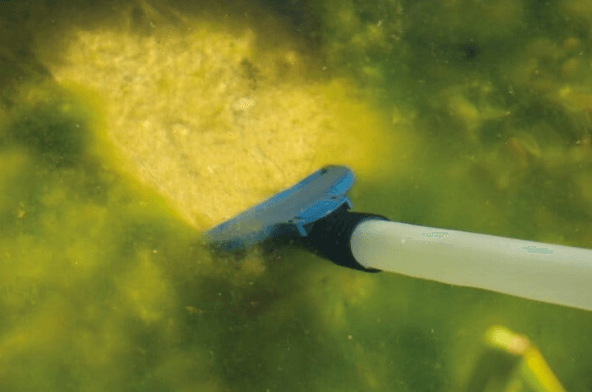The Ultimate Guide to Manual and Electric Natural Pond Vacuum Solutions

Introduction
Maintaining a natural pond can be both rewarding and challenging. Unlike traditional swimming pools, natural ponds rely on a delicate ecosystem of plants, fish, and beneficial bacteria to remain healthy and clean. Over time, debris such as leaves, algae, and sediment can accumulate on the pond floor, disrupting water quality and harming aquatic life. This is where manual and electric natural pond vacuum solutions become essential. Designed to remove sludge, silt, and organic matter efficiently, these vacuums help pond owners maintain clear, healthy water while protecting the pond’s natural balance.
Why Natural Pond Vacuums Are Important
Natural ponds require careful maintenance to preserve their ecosystem. Organic debris that sinks to the bottom breaks down into nutrients that fuel algae growth, leading to murky water and reduced oxygen levels. Manual and electric pond vacuums allow pond owners to remove this buildup effectively, preventing long-term damage and reducing the need for chemical treatments. With the right vacuum, maintaining water clarity becomes easier and less time-consuming.
Manual Natural Pond Vacuum Solutions
Manual pond vacuums are simple, affordable, and highly effective for small to medium-sized natural ponds. They work much like a traditional pool vacuum but are designed to handle uneven pond floors and organic debris.
Features of Manual Vacuums
- Affordable and Accessible: Ideal for pond owners on a budget.
- Lightweight and Portable: Easy to maneuver around the pond.
- Simple to Use: Connects to a hose or bucket system to suction debris manually.
- Precision Cleaning: Allows careful removal of sludge in targeted areas without disturbing fish or plants.
Benefits of Manual Vacuums
- Cost-effective solution for small ponds.
- Minimal maintenance and no electricity required.
- Eco-friendly, as it avoids energy consumption.
- Gives the pond owner control over cleaning without disturbing natural habitats.
Electric Natural Pond Vacuum Solutions
Electric pond vacuums offer more power and efficiency, making them ideal for medium to large ponds or ponds with heavy debris buildup. They use motorized suction to lift sludge, algae, and leaves quickly and effectively.
Features of Electric Vacuums
- Powerful Suction: Removes fine sediment and heavier debris effortlessly.
- Large Capacity: Many models include collection tanks or direct filtration systems.
- Extended Reach: Long hoses allow cleaning of deep areas and corners without repositioning.
- Continuous Operation: Some units offer dual-chamber systems for uninterrupted cleaning.
Benefits of Electric Vacuums
- Saves time compared to manual cleaning.
- Reduces physical effort for pond owners.
- Effective for large ponds or heavily soiled areas.
- Compatible with natural pond ecosystems when used properly.
Choosing Between Manual and Electric Vacuums
The choice between manual and electric natural pond vacuum solutions depends on several factors:
- Pond Size: Small ponds can be efficiently cleaned with manual vacuums, while larger ponds benefit from electric models.
- Debris Type: Light leaves and small sediment can be handled manually; heavy sludge or thick organic buildup requires electric power.
- Budget: Manual vacuums are more affordable upfront, whereas electric vacuums are an investment in efficiency.
- Frequency of Cleaning: Manual vacuums work well for occasional cleaning, while electric vacuums are suited for regular maintenance.
Maintenance Tips for Natural Pond Vacuums
Proper maintenance of your natural pond vacuum ensures it performs efficiently and lasts for years. Regular care also protects your pond ecosystem and keeps your cleaning sessions hassle-free. Here are some essential tips:
1. Rinse and Clean After Each Use
After vacuuming, always rinse the collection chamber, suction head, and any attachments with clean water. This prevents clogging caused by leaves, algae, or sludge that can harden if left inside. For electric vacuums, avoid getting electrical components wet; focus on cleaning the debris collection areas and detachable parts.
2. Inspect Hoses and Attachments Regularly
Check hoses, nozzles, and connections for cracks, holes, or blockages before and after each use. Even small leaks can reduce suction efficiency, making cleaning less effective. Replace worn or damaged parts promptly to maintain optimal performance.
3. Proper Storage
Store manual vacuums in a dry, shaded place to prevent warping or corrosion of plastic and metal components. For electric or cordless models, ensure they are kept away from moisture and direct sunlight. Remove batteries (if possible) and store them in a cool, dry location to extend battery life and prevent electrical damage.
4. Maintain Filters and Batteries
If your vacuum has filters, clean them regularly according to the manufacturer’s instructions. This prevents reduced suction and prolongs motor life. For cordless electric models, charge batteries fully before storing, and avoid leaving them completely drained for extended periods. Some models may require periodic battery conditioning to maintain performance.
5. Lubrication and Minor Repairs
Occasionally check moving parts, such as wheels or rotating brushes, and apply suitable lubrication if recommended by the manufacturer. Tighten loose screws or fittings to prevent malfunctions during operation.
6. Seasonal Deep Cleaning
At least once a season, disassemble the vacuum for a thorough inspection. Clean all internal components, remove any buildup in hoses, and check the integrity of seals and connections. This ensures your vacuum remains reliable during peak debris seasons, such as autumn when leaves fall heavily into the pond.
7. Follow Manufacturer Guidelines
Always follow the specific maintenance and usage instructions provided by the vacuum manufacturer. This ensures safety, prolongs the life of the equipment, and keeps your pond ecosystem safe from accidental damage.
Frequently Asked Questions
Can manual vacuums damage fish or plants?
When used carefully, manual pond vacuums are safe for fish and plants, as they allow precise cleaning of specific areas.
Are electric pond vacuums suitable for natural ponds?
Yes, modern electric vacuums are designed to work without harming fish, plants, or beneficial bacteria if used according to instructions.
How often should a natural pond be vacuumed?
Depending on debris accumulation, small ponds may need cleaning monthly, while larger ponds may require more frequent vacuuming.
Can I use both manual and electric vacuums in the same pond?
Absolutely. Many pond owners combine manual vacuums for light touch-ups with electric vacuums for deep cleaning sessions.
Conclusion
Maintaining a natural pond doesn’t have to be difficult. With the right manual and electric natural pond vacuum solutions, pond owners can remove debris efficiently, protect aquatic life, and preserve the beauty and balance of their ecosystem. Manual vacuums offer affordability and precision for smaller ponds, while electric models provide powerful suction and time-saving efficiency for larger, heavily used ponds. By selecting the appropriate vacuum and following proper maintenance routines, you can enjoy a clean, healthy, and thriving natural pond all year round.




